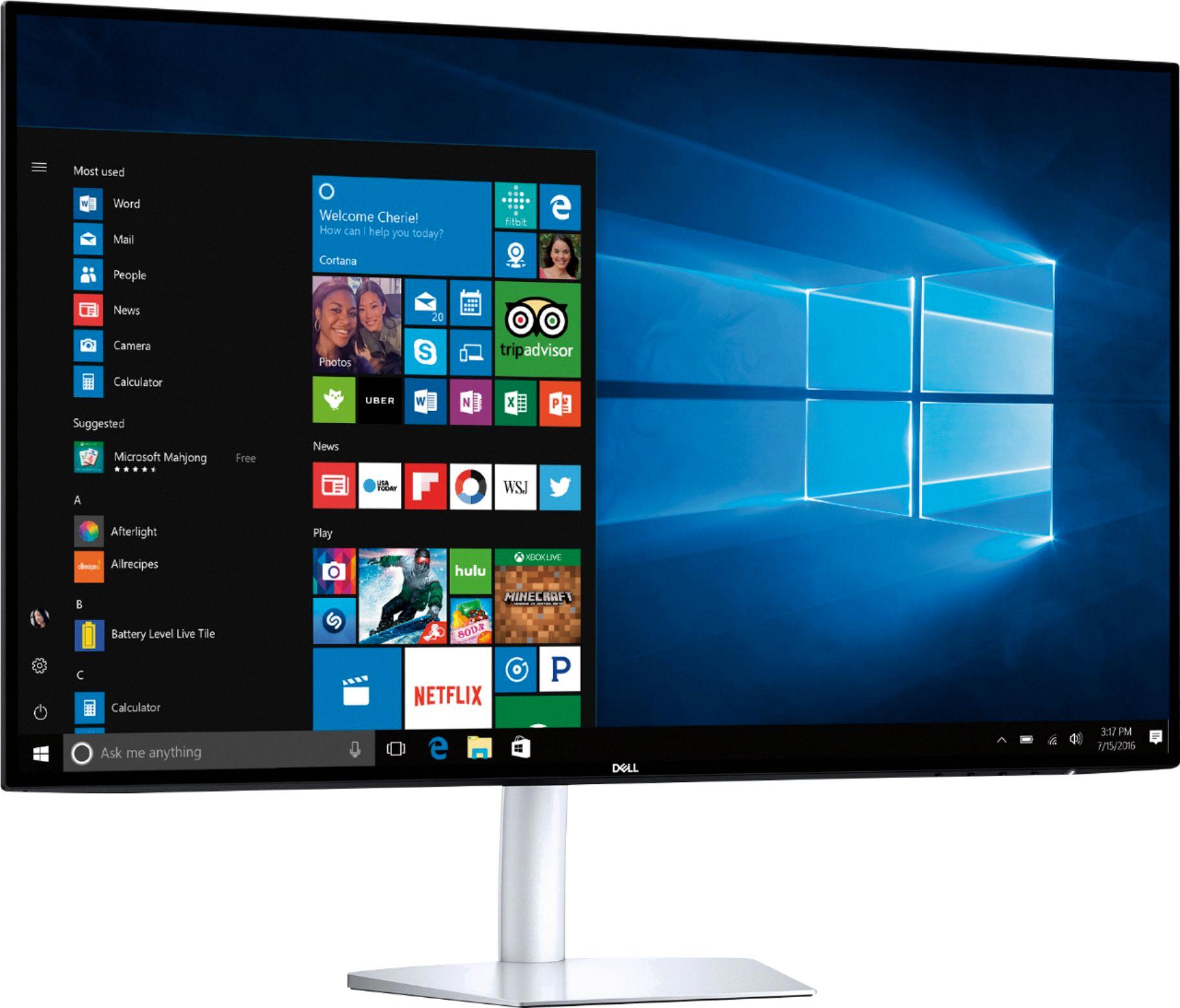A QHD monitor is a display that offers four times the resolution of standard HD. The acronym QHD itself stands for Quad HD, which refers to the monitor’s resolution of 2560 x 1440 pixels. This resolution is four times higher than 720p, which is the standard resolution for HD displays.
Compared to Full HD (1080p) monitors, QHD displays offer noticeably sharper and more detailed images. This is because QHD displays have twice as many pixels as Full HD displays. The extra pixels allow for finer details to be displayed, resulting in more realistic images.
QHD monitors are a popular choice for those who want a high-quality display without paying the premium price of a 4K monitor. While 4K monitors offer even higher resolutions, they are significantly more expensive and require more powerful hardware to run smoothly.
One of the benefits of QHD monitors is that they strike a great balance between 1080p and 4K. At 1440p, they provide a significant increase in detail and clarity over 1080p monitors, while still being more affordable and accessible than 4K displays. For many users, QHD is considered the sweet spot in resolution.
In addition to their high resolution, QHD monitors often feature other advanced technologies such as IPS panels, high refresh rates, and HDR support. IPS panels provide wider viewing angles and more accurate colors, while high refresh rates allow for smoother motion in games and videos. HDR support allows for a wider range of colors and improved contrast, resulting in more realistic and immersive images.
When shopping for a QHD monitor, it’s important to consider factors such as panel type, refresh rate, and connectivity options. IPS panels are generally preferred for their color accuracy and wide viewing angles, while TN panels offer faster response times and lower input lag. Refresh rates of 144Hz or higher are recommended for gamers, while connectivity options such as DisplayPort and HDMI are important for connecting to different devices.
QHD monitors provide a significant increase in resolution and detail over standard HD displays, while still being more affordable than 4K monitors. They are a popular choice for gamers, video editors, and other professionals who require high-quality displays. When shopping for a QHD monitor, it’s important to consider factors such as panel type, refresh rate, and connectivity options to ensure that you get the best possible display for your needs.
Comparing QHD and 4K Resolution
When it comes to comparing QHD and 4K, it depends on what you mean by “better.” In terms of resolution, 4K has a higher resolution than QHD with 3840 x 2160 pixels compared to QHD’s 2560 x 1440 pixels. This means that 4K has four times more detail than QHD. However, this also means that 4K requires more processing power and storage space to handle the larger file sizes.
Additionally, the difference in resolution may not be noticeable depending on the screen size and viewing distance. For example, if you have a smaller screen or sit further away from the screen, you may not see a significant difference between QHD and 4K.
In terms of price, 4K displays tend to be more expensive than QHD displays. So, if you’re on a budget, QHD may be a better option for you.
Ultimately, whether QHD or 4K is better for you depends on your specific needs and preferences. If you prioritize resolution and have the budget and hardware to handle 4K, it may be the better choice. However, if you’re looking for a more cost-effective option and don’t require the highest resolution, QHD may be the way to go.

The Benefits of QHD Over Full HD
QHD is better than Full HD. QHD resolution offers four times the definition of standard HD, which means it has a resolution of 2560 x 1440 pixels, while Full HD only has 1920 x 1080 pixels. This means that QHD screens are noticeably sharper and offer more detail than Full HD screens. QHD displays offer a higher pixel density and a wider viewing angle, which makes them ideal for those who need to view detailed images or work with multiple windows at once. Additionally, QHD displays are perfect for gamers and video editors who need a high level of detail and clarity in their work. However, QHD displays are more expensive than Full HD displays and require more powerful hardware to run smoothly.
The Benefits of Using a QHD Monitor
A QHD monitor, also known as 1440p or 2k monitor, is considered a good option for those looking for a balance between 1080p and 4k resolutions. This resolution offers a higher pixel density than 1080p, resulting in sharper and more detailed images on the screen. QHD monitors also typically have a larger screen size than 1080p monitors, providing a more immersive experience for the user. Additionally, QHD monitors are often more affordable than 4k monitors, making them a popular choice for those on a budget. a QHD monitor can be a great option for those who want a high-quality viewing experience without breaking the bank.
Difference Between QHD and UHD Monitors
QHD and UHD are two different display resolutions commonly used in monitors. QHD, or Quad High Definition, refers to a resolution of 2560 x 1440 pixels. On the other hand, UHD, or Ultra High Definition, refers to a resolution of 3840 x 2160 pixels. Both QHD and UHD monitors have a 16:9 aspect ratio, which means that the width is 16 units for every 9 units of height.
The main difference between QHD and UHD monitors is the resolution. UHD has a higher resolution than QHD, which means that it can display more detail and provide a sharper image. UHD monitors are ideal for tasks that require detailed images, such as photo and video editing, graphic design, and gaming.
Another difference between QHD and UHD monitors is the price. UHD monitors are generally more expensive than QHD monitors due to their higher resolution and advanced technology.
QHD and UHD monitors differ in their resolution and price. QHD has a resolution of 2560 x 1440 pixels, while UHD has a resolution of 3840 x 2160 pixels. UHD monitors provide a sharper and more detailed image, but they are also more expensive than QHD monitors.
Conclusion
A QHD monitor is a display that offers four times the definition of standard HD with a resolution of 2560 x 1440 pixels. This resolution is four times higher than its predecessor, 1080p, and is noticeably sharper than Full HD resolution models. QHD screens strike a great balance between 1080p and 4k, making them a popular choice for monitors. While UHD can display a higher resolution of 3840 x 2160, both QHD and UHD feature a 16:9 aspect ratio. With its high level of detail and clarity, a QHD monitor is an excellent choice for anyone looking to upgrade their viewing experience.








